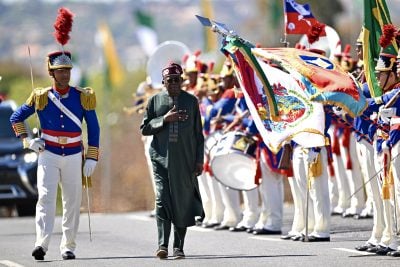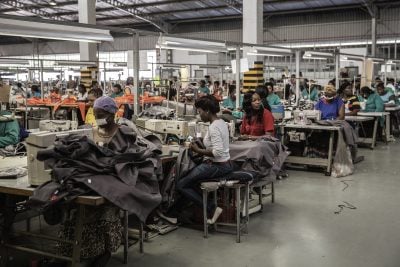After nearly two decades of significant bilateral lending, researchers have seen a drastic decline in lending from China’s policy banks. The impact of this retrenchment will be felt all over the world but will be greatest in Africa where the need for infrastructure is highest and the ability to fund lowest.
According to research from the China Africa Research Initiative, the decline in Chinese lending to Africa has been stark. As recently as 2016, Chinese lending to the public sector in Africa was $28bn. It declined to $9.9bn in 2018 and declined again to $7bn in 2019. Over the last two decades China has emerged as the continent’s largest bilateral lender, committing $153bn to over 1,140 projects in Africa, with power and transportation, where Africa has the greatest deficits, accounting for about 55%.
This slowdown in infrastructure deals from China is expected to continue, resulting in a reduction in the volume of projects, with more targeted lending under more stringent lending terms.
The reasons for this decline are myriad – changes in the Chinese economy, the uncertainty of the Chinese trade war with the US, and Chinese investment losses in Venezuela and elsewhere. It would not be a surprise if that decline is also a result of the relentlessly negative coverage that Chinese lending has received and the direct ties that have been made between patterns of Chinese lending and debt distress in some of the world’s poorest countries.
Whatever the drivers of Chinese retrenchment from infrastructure financing, it leaves a gap for which there is no ready replacement.
It could not have come at a worse moment for Africa. The effect of the Covid-19 pandemic has already wreaked havoc on African economies. Movement restrictions and the huge fall in demand at the beginning of the outbreak have forced treasuries to the brink, leading to Zambia’s default on sovereign debt and a significant liquidity crunch.
The IMF now predicts that Africa will be the world’s slowest growing region in 2021. Since African governments finance up to 40% of their own infrastructure, any reduction in revenues will translate into a reduced capacity to fund infrastructure upgrades and maintenance and bring new projects online.
In its recent report on African infrastructure, law firm Baker McKenzie shows that the decline in lending from China has not been the only bad news for African infrastructure. Multilateral lending has also declined. This decline comes on the heels of a definitive shift by Western governments away from financing all fossil fuels. Yet in Africa, where over half a billion still lack access to electricity, the IEA’s Global Electricity Review shows that only a third of the rise in Africa’s energy demand was met by renewable sources.
Unless there are new sources of financing, the infrastructure required to drive productivity in African economies and the prospect of an Africa free of extreme poverty recedes even further. Even with the scope of Chinese lending in Africa, the infrastructure gap has remained very significant. The Chinese were not displacing any lender – multilateral or bilateral.
The picture of the effect of Chinese lending has always been complex. World Bank data showed that in about seven African countries, China accounted for over 25% of the debt stock. In another 12 countries, Chinese debt is less than 15% of all debt. So when we speak of China’s role in African countries facing debt distress, our attention is largely focused on seven: Djibouti, Angola, Republic of Congo, Cameroon, Ethiopia, Kenya, and Zambia.
Africa’s traditional partners – especially the US and Europe – have repeatedly questioned the motivations and negative impact of Chinese lending in Africa. The critique has gone from the possibility of Chinese creditors seizing flagship national infrastructure to accusations of a neo-colonial intent on the part of China.
It remains to be seen whether the US or Europe will attempt to fill the gap China will leave if this downward trend becomes permanent. Europe and India are reportedly planning on launching an alternative to Chinese lending for infrastructure, while the US and the EU seek to put such an initiative on the G7 agenda. This development can, at best, be observed with interest. Until we know the size of the funding package to back these declarations, they remain just that.
Where can Africa find new sources of funding?
This period of sustained Chinese lending for infrastructure was bound to end. African governments will have to explore alternative sources of funding – especially the private sector. There are enough private resources under management by firms with an appetite for African risk to meet the infrastructure financing gap.
To tap into that pool will require substantive improvement in governance across the region. For investors seeking new destinations and those interested in ESG, there are still governance red flags across African markets that heighten the already inflated risk perception.
It is now clear that although China will remain a major player in African infrastructure financing, we are witnessing a diminished footprint and a curbing of its appetite. There is also a noticeable reduction across the multilateral financing landscape, leaving the funding of African infrastructure disproportionately on African governments and possibly the private sector. One hopes that the regulatory environment across African markets will become more rules-based, predictable, and stable to provide the level of certainty private capital requires.
Gyude Moore is a senior policy fellow at the Center for Global Development. He previously served as Liberia’s minister of public works.
Want to continue reading? Subscribe today.
You've read all your free articles for this month! Subscribe now to enjoy full access to our content.
Digital Monthly
£8.00 / month
Receive full unlimited access to our articles, opinions, podcasts and more.
Digital Yearly
£70.00 / year
Our best value offer - save £26 and gain access to all of our digital content for an entire year!
 Sign in with Google
Sign in with Google 



